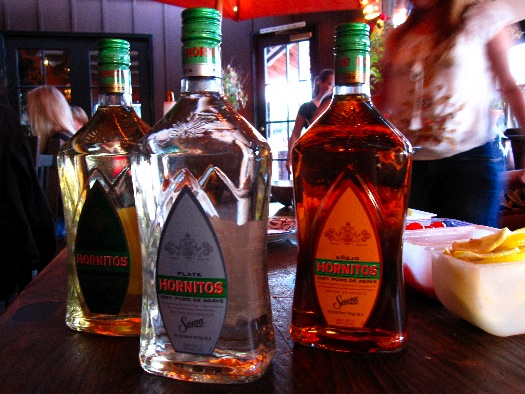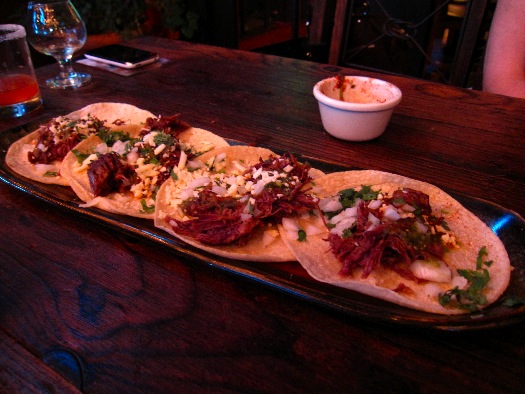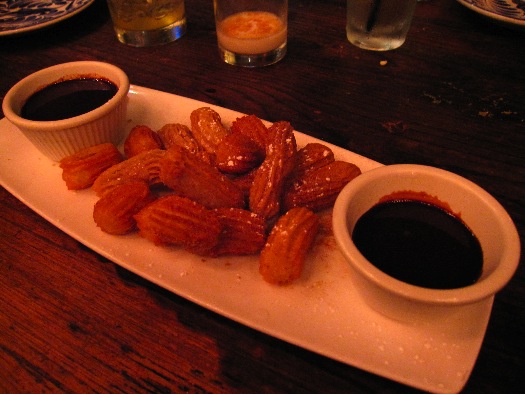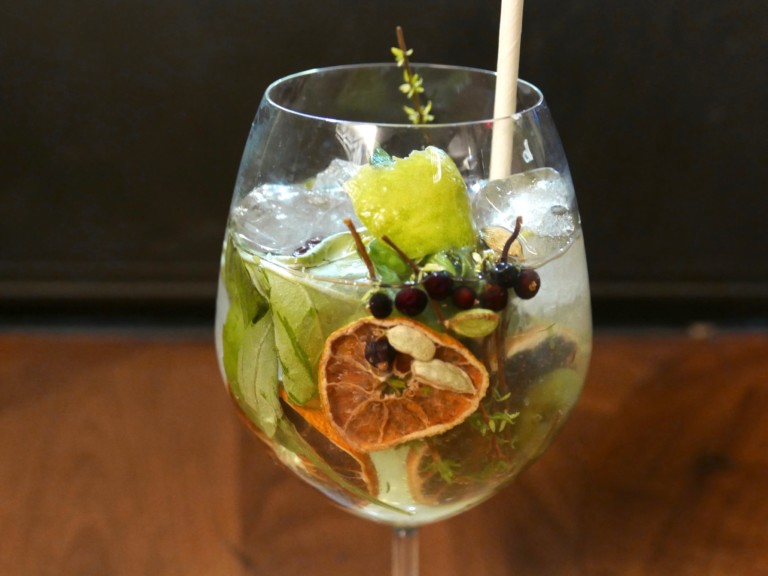It’s storming in Mexico and a band of Aztecs take shelter under a massive agave plant. Lightning strikes the plant and the core cooks, emitting an enticing ooze. The Aztecs consume the nectar and suddenly all their worries are forgotten. Surely this liquid was a gift of the gods. Aztecs looked to repeat the high, lopping off the tops of agave plants to ferment pulque. Europeans arrived in Mexico and began to distill pulque, upping the alcohol content and smoothing out the sip. This oft-told tale was the first lesson we received on June 23 at Ortega 120‘s Tequila University.
This summer, Ortega 120 co-owner/mixologist Demi Stevens is giving people an intoxicating reason to attend summer school. Every other Tuesday, the Redondo Beach restaurant is featuring a different distillery. On June 23, the down-to-earth Stevens provided an approachable tequila lesson in an inviting setting and even included some hearty Mexican food.
Stevens and Hornitos rep Gina began the “class” by explaining that tequila requires 100% blue agave that must be grown in one of five Mexican states: Jalisco, Nayarit, Michoacan, Guanajuato and Tamaulipas.

Gina provided a short history of Hornitos and clarified the differences in their three grades of “premium” tequila. The Hornitos distillery was founded in 1873 and it was one of the first brands to be exported to the U.S. They use smaller, sweeter agave grown in the Highlands.
Hornitos uses double distillation for their blanco, running the tequila through a stainless steel still, then into a copper pot for “bold flavor” and a peppery bite. The company’s reposado was amber-hued and aged for two months in a 30,000-liter oak tank. Anejo is copper colored and incorporated tequila aged between 1 to 5 years in a combination of white oak and bourbon barrels. Gina said the barrels expand in summer, allowing the liquid to seep into the wood. In the winter, the barrels constrict and the wood releases flavored tequila back into the batch. The anejo had a vanilla flavor from the bourbon barrels, with a fig-like sweetness.
Stevens also featured step-by-step tequila cocktail lessons. She said that one key to a winning cocktail is the right ratio: 3 parts alcohol, 2 parts sweet, 1 part sour and 1/2 part water (ice). Her first balanced cocktail was the Paloma, tequila blanco with 120 margarita mix, nectarine marmalade, shaken with ice and garnished with a fresh cut nectarine.

Stevens’ second cocktail was a play on an Old Fashioned called the Abuelo (grandfather). She muddled cherries and orange slices with agave nectar (“the beginning of tequila”), making sure not to muddle the rind since it makes the cocktail “really, really tart.” She rimmed the glass with cane sugar before adding the muddle, an ounce-and-a-half of tequila anejo and ice.

Tequila University also included plenty of food, highlighted by short rib tacos on house-made tortillas and addictive donut-like churros made with cake better and served with chocolate dipping sauce.

Tequila University is scheduled July 7, July 21, August 11 and August 25, at a cost of $20-30 per session. As a parting gift, students receive Ortega 120’s Tequila Tasting Journal, which covers 120 varieties of tequila.








Blog Comments
homodachi
June 27, 2009 at 12:31 PM
Those churritos look amazing <3